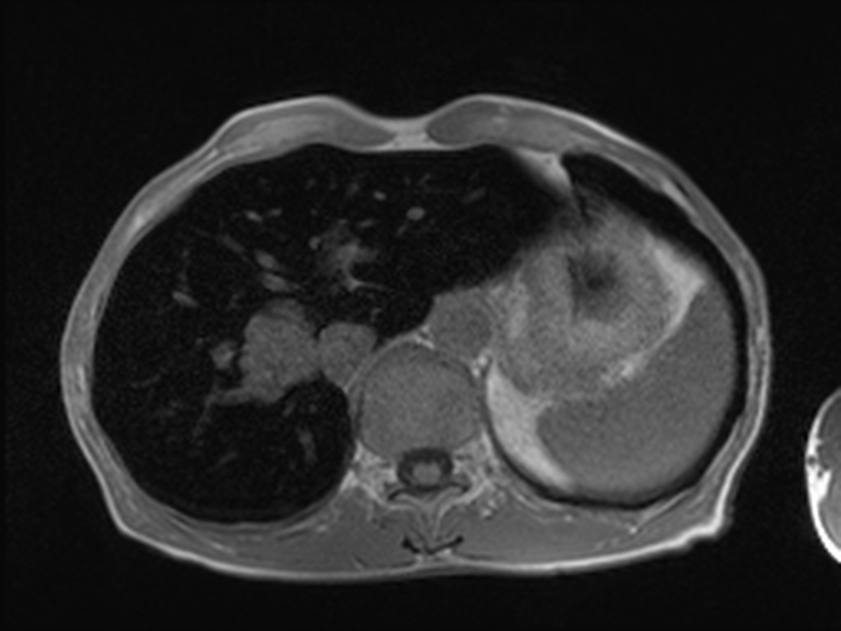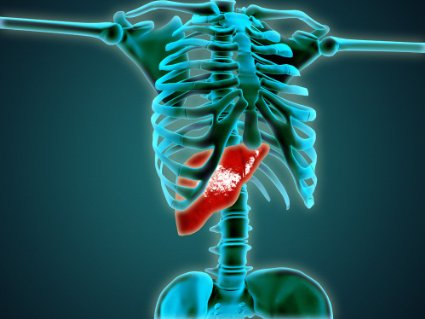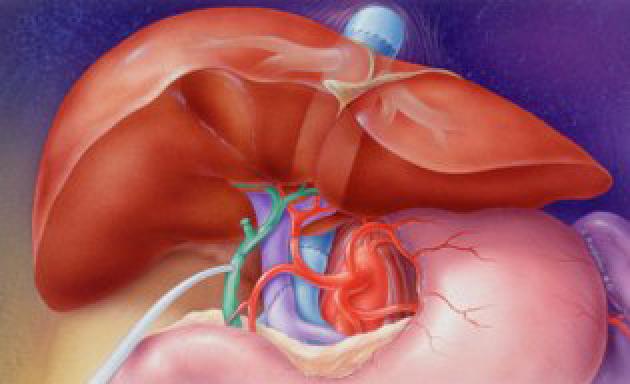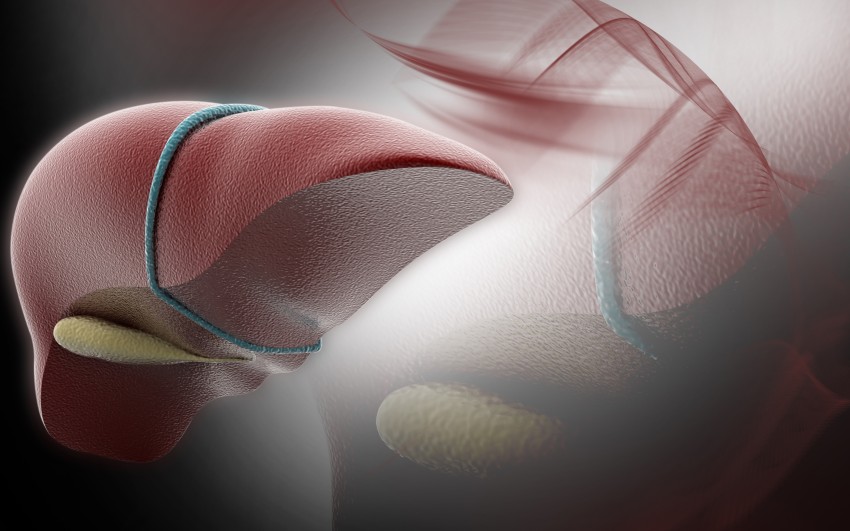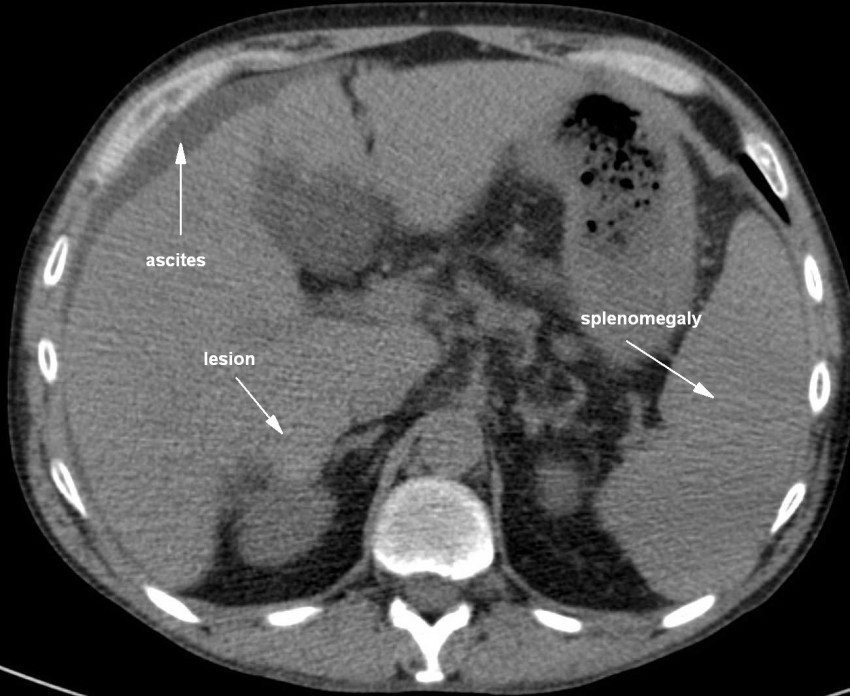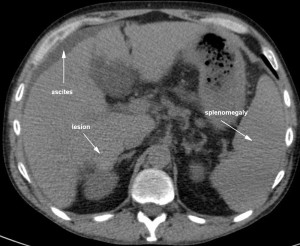Liver Problems 7
HEMOCHROMATOSIS OF THE LIVER

Hemochromatosis is a genetic disorder where the body absorbs and stores too much of iron. This extra iron gets stored in all parts of the body especially the liver and leads to serious complications. The body absorbs about 10 percent of iron (about 1 – 2 grams per day) from food we take and is sufficient for the body. People with Hemochromatosis absorb more (4 – 5 grams leading to 15 – 40 grams per day) than the body needs leading over build up of iron and causing organ failures.
Symptoms for Hemochromatosis
There are no specific symptoms for this condition. Common symptoms of hemochroatosis are fatigue, pain in the abdomen and heart problems. These signs are noted in men between the age of 30 and 40 and above age 50 for women.
When the disease is not detected early, iron build up in the tissues cause serious complications such as
- Liver problems like cirrhosis, liver cancer, enlarged liver and liver failure
- Arthritis
- Diabetes
- Heart problems and heart failure
- Pigmentation and discolouration of skin
- Early onset of menopause
- Damage to pituitary and adrenal glands
- Impotence
- Gall bladder disease
- Depression
- Joint pains
- Loss of body hair (except scalp)
Genetic Cause for Hemochromatosis
Hemochromatosis is the result of a defect in the gene called HFE. HFE functions in regulating the iron absorption from food. The gene is present at birth but hemochromatosis develops only when both the parents have the defective gene. If it is from one parent, then the person is a carrier of the defective gene and does not develop hemochromatosis.
Adolescent and Neonatal Cause for Hemochromatosis
The cause for the adolescent and neonatal hemochromatosis is not known although it is not due to the HFE gene defect. The condition forms a fatal overload of iron and causes liver and heart diseases in both the cases.
Diagnosis for Hemochromatosis
If the levels are high in the following blood tests, test for confirming the presence of the HFE gene is done.
- Serum iron test – measures the level of iron concentration in blood
- Total iron binding capacity – measures the quantity of iron that the blood can carry
- Serum ferritin level – measures the level of ferritin protein containing iron
A liver biopsy confirms the presence of this disease. Excessive iron storage is found in liver damaged patients due to alcohol and hepatitis infection.
Treatment for Hemochromatosis
Treatment for hemochromatosis is safe and inexpensive. The best and effective treatment for hemochromatosis is Phlebotomy. It is a process where certain amount of blood is taken out from the body once or twice a week depending on the severity of iron over load. The treatment is followed for few months to a year. It helps reduce the iron level in the blood to normal and maintain the same. After this, maintenance treatment is given where a certain amount of blood is given every 2 to 4 months for life. The frequency of blood transfusion is based on the blood results every year.
Liked this article on Hemochromatosis Of The Liver and have something to say? Comment below and don’t forget to SHARE THIS ARTICLE!
SYMPTOMS OF LIVER DISEASE
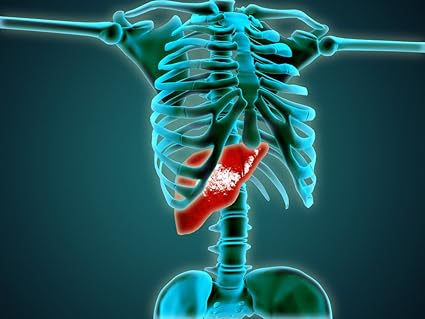
The liver is located in the upper right side of the abdomen below the ribs. It has many essential body functions such as:
- Producing bile, which helps your body absorb dietary fats, cholesterol, and vitamins A, D, E, and K
- Storing sugar and vitamins for later use by the body
- Purifying blood by removing toxins such as alcohol and bacteria from your system
- Creating blood clotting proteins
If there is any complication in those above mentioned functions, People will undergo the following symptoms.
Causes Pain in Abdomen and Swelling (Ascites)
A swollen abdomen occurs when your stomach area is larger than normal. This is sometimes called a distended abdomen or swollen belly. Sometimes it may occur if there is indigestion, food poison and so on; however people need to be aware if there is severe pain particularly in upper abdomen. There may also be
- A feeling of fullness
- Discomfort in your belly

Nausea and Blood in Your Vomit or Stool
Blood in vomit or stool is usually caused by bleeding from veins in the stomach. Vomiting blood, bloody vomit, hematemesis or haematemesis is a symptom that gives direct relation to disease in liver.
Loss of appetite
As the liver fails, complications may develop. In some people, complications may be the first signs of the disease. Many people with cirrhosis have no symptoms in the early stages of the disease. However, as the disease progresses, a person may experiences loss of appetite as a first symptom.
Indigestion and Burning Sensation in Stomach
Indigestion, also known as “dyspepsia”, is a term used to describe one or more symptoms including a feeling of fullness during a meal, uncomfortable fullness after a meal, and burning or pain in the upper abdomen.
Swelling in legs and ankles (edema)
‘Edema’ occurs when tiny blood vessels in your body (capillaries) leak fluid. This leakage can result from damage to or increased pressure in the capillaries, or from lowered levels of serum albumin, a protein in your blood.
When your body senses the capillaries are leaking, your kidneys begin to retain more sodium and water than normal to compensate for the lost fluid from your blood vessels. This increases the amount of fluid circulating through your body, which causes the capillaries to leak more. The fluid from the capillaries leaks into the surrounding tissue, causing the tissue to swell.

Chronic fatigue
Chronic Fatigue Syndrome (CFS) is also known as Myalgic Encephalomyelitis (ME) and it primarily affects young adults and resembles a prolonged flu-like illness.
The symptoms must be present for at least six months before it can be labelled as chronic fatigue syndrome. It seems that about 2 to 4 in a thousand people may have CFS and approximately two thirds of people who get it, are women.
Jaundice
Patients who have jaundice usually have both yellow-colored skin and eyes. Red blood cells travel to your liver, where they are broken down. “Bilirubin” is the yellow pigment formed by the breakdown of these old cells. Jaundice occurs when your liver doesn’t metabolize bilirubin the way it is supposed to.

Itching Skin
Pruritus simply means itching. Prolonged itching of the skin is a major sign of liver disease. When the liver is unable to properly neutralize chemicals, toxins and parasites in the body, a backup method of elimination is that the body may then try to get rid of these undesirable substances through the skin. This can result in itchy rashes and brown spots on the outside of the skin as the foreign substances are pushed out through the outer skin layers.
Changes in Urine Color
Observing the color of your urine is a reasonable way to be alerted that your liver might be abnormal. In general, dark urine could be a signal that the liver is struggling to function properly. When referring dark-colored urine, the following colors are implied:
- Orange
- Amber
- Brown
- Root beer or cola-colored
Many symptoms might be observed even during the normal functioning of your liver, hence always get the advice from a physician before coming to a conclusion.
Liked this article on Symptoms Of Liver Disease and have something to say? Comment below and don’t forget to SHARE THIS ARTICLE!
LIVER FAILURE

The Liver is the only organ that has the natural regenerative capacity. Liver Failure is the irreversible damage to the normal liver tissue where there is scarring of the liver tissue and is beyond the liver’s regenerative capacity. Liver Failure is also called end-stage disease. The main causes for this condition are excess alcohol consumption, viral infection and fatty liver disease.
Causes
The liver produces substances to fight infections in our body. It also helps in getting rid of toxins from our body. It also helps in clotting of the blood, in the nutrient absorption process and also stores energy for our body for later use.
The liver damage may be acute due to following reasons.
- Overconsumption of alcohol
- Viral Infections (Hepatitis B, C and D)
- When the biliary ducts are blocked and bile backs up, it damages the liver
- Autoimmune disorder, where the healthy liver tissue is attacked by the body’s immune system leading to liver failure
- Non-Alcoholic fatty liver disease, where fat builds up in the liver, gradually causing liver damage
- Genetically inherited factors
- Over dosage of drugs/toxins
- When the heart doesn’t pump adequately, blood backs into the liver causing liver failure.
How does the damage happen?
When there is cell damage due to any of the above reasons, the liver produces scar tissues as a result of cell damage and becomes bulged
Initially, though the liver is bulged, as the disease progresses, it begins to shrink in size.
As the scar tissues are hard, they press the blood vessels in the liver and causes interruption to the blood circulation in the liver
The liver gradually dies.
Symptoms of Liver Failure
The following symptoms are seen in Liver Failure
- Tiredness
- Nausea
- Weight loss due to lack of appetite
- Lack of sex drive
- Other symptoms are felt only when the disease has progressed:
- Fluid retention in abdomen
- Accelerated heartbeat
- Confusion
- Dizziness
- Hair loss
- Edema
- Fever
- Muscle cramp
- Blood vomit
- Darker urine
- Staggering
- Nose bleed
- Breathlessness
Complications Due To Liver Failure
Because of scar tissue formation, the blood vessels in the liver get compressed causing high blood pressure in the liver. This is called portal hypertension and can cause bleeding in intestines and fluid accumulation in the body
As the liver loses its ability to filter toxins from the blood, the toxins are left to build up in the blood stream. Due to this, there is a confused behavior in the individual and he/she always feels sleepy.
Due to portal hypertension, the fluids in the body get accumulated in the abdomen. The kidney gets a wrong signal that there is dehydration and tries to hold the fluid. The fluid gets collected in lungs, legs and abdomen.
Liver failure also gradually causes kidney failure
Although liver failure on the outlook looks like a disease that might affect those who consume too much alcohol, it is not actually so. Lifestyle habits, Diet, Genes and Virus too play an important role in liver problems.
Liked this article on Liver Failure and have something to say? Comment below and don’t forget to SHARE THIS ARTICLE!
LIVER REGENERATION AND LIVER FAILURE

Liver is the largest of internal organs and is situated under the ribs on the right side of the chest. It plays a vital role by producing proteins, storing nutrients, removing harmful substances from the blood and in clotting of the blood. It also helps in breaking down, processing and absorbing of cholesterol and iron.
Liver Regeneration
The liver regenerates in two ways: one where it replaces the tissues that are damaged due to the contact of harmful substances and the other where, the rest of the liver does the work of the damaged part until the injured tissues are repaired. Mostly, liver failure happens over a period of time but in few acute cases, liver failure happens with 48 hours.
Causes of Liver Failure
Liver disease can be genetic and can often be due to the consumption of certain types of drugs and sometimes by alcohol. It also occurs when infected with Hepatitis A, B, C, D and E. Other than this, liver problem can also be due to Jaundice, presence of too much iron (Hemochromatosis, a genetic condition), Cirrhosis, and fatty liver due to obesity and by Epstein virus.
Signs of Liver Problem or Failure
Some signs of liver problems are
- Tenderness around the area of the liver
- Swollen abdomen
- Feeling of weakness or fatigue
- Weight loss
- Nausea
Tests Conducted
Your doctor when suspects a liver problem, can order for tests like blood tests, CT, MRI, Endoscopic Retrograde Cholangiopancreatography (ERCP) and magnetic Resonance Cholangiopancreatography (MRCP). The tests may vary based on the signs and symptoms.
Diet
The patient can follow a low fat, large carbohydrate diet once diagnosed with liver problem. They will have to reduce the consumption of salt and the intake of protein as advised by the doctor. Vitamin B complex is usually prescribed.
Prevention
Alcohol abuse is the most common reason for liver failure. Prevention or consumption in moderation helps in minimizing the risk. Healthy lifestyle and weight control helps in preventing fatty liver disease.
Prevention of acquiring Hepatitis can be achieved by maintaining proper hygiene and not exposing oneself to Hepatitis prone regions.
Cirrhosis which is the final stage of the many types of liver problem can be permanent leaving the liver to not perform properly and eventually liver failure. Patients with Cirrhosis will have to stay away from alcohol to prevent further damage. When there is a liver problem, common signs like tiredness and weight loss may always not point towards the liver.
It is important to visit the doctor if vomiting and fever persists. However, with Cirrhosis, vomiting blood, rectal bleeding, and mental confusion can occur and requires immediate medical attention.
In case of liver failure where treatments have already been administered, doctors try to save part of the liver which is still working. If this is not possible then the patient will need to have a liver transplant. Liver transplants these days have high success rates. To maintain healthy liver, alcohol prevention and leading a healthy lifestyle is the key.
Liked this article on Liver Regeneration And Liver Failure and have something to say? Comment below and don’t forget to SHARE THIS ARTICLE!
CIRRHOSIS OF THE LIVER
The liver which is the largest of the internal organs, plays a major role by producing the proteins required for the body, clotting of the blood, storing the nutrients and sending nutrients to the bloodstream, producing bile which is required for digesting food, storing the sugar, and eliminating harmful substances from the blood. In this process, the liver comes in contact with various harmful substances which scar the liver.
Cirrhosis
Cirrhosis is the final stage of any type of liver damage and happens over a long period of time. The liver tissue is damaged and becomes scarred. The scar tissue cannot perform its functions thereby restricting the flow of blood and reduce the production of proteins, glucose and cholesterol.
Mostly, Cirrhosis is the result of Hepatitis C, alcohol and fatty liver. Once Cirrhosis occurs, it cannot be reversed and more and more tissues get scarred eventually leading to liver failure. Other complications are kidney failure, liver cancer, insulin resistance, diabetes, gallstones, esophageal varices (the bile which cannot pass through the liver is backed up to the esophagus), edema and enlarged spleen.
Though it is fatal, further damage to the liver tissues can be avoided if detected early.
Cause of Cirrhosis
The liver can repair its damaged tissues but with long term exposure of harmful substances like Hepatitis virus and alcohol, Cirrhosis happens. It shrinks and hardens the liver tissue restricting the normal liver function.
Cirrhosis Due to Alcohol
Cirrhosis by alcohol happens when a woman takes more than 2 drinks a day and when a man takes more than three per day for more than 10 years. It however is different for each and every individual.
Cirrhosis Due to Fatty Liver
Cirrhosis due to fatty liver is due to the buildup of fat in the liver. The fat buildup can be in people who may be obese, diabetes, high BP, repeated heart problems and metabolic syndrome which is associated with the size of the person.
Cirrhosis Due to Genes
Cirrhosis can also be genetic, where the person is affected with any of the diseases such as the Wilson’s disease, galactosemia, hemochromatosis, Alpha- 1 antitrysin deficiency and other glycogen storage issues.
Symptoms of Cirrhosis
The symptoms of Cirrhosis are jaundice, loss of appetite, weight loss, weakness, itchiness, nose bleeding, mental confusion, swelling of the abdomen, swelling of the legs, impotence and gynecomastia where breast development occurs in men.
The doctor looks for signs and symptoms and orders for appropriate tests. The tests which can detect Cirrhosis are family history, blood count test, albumin test (shows the rate at which the blood clots), liver function tests, liver biopsy, MRI of the abdomen area, Scan of the liver, CT of the abdomen and alpha fetoprotein which detects the presence of liver cancer.
Cirrhosis when detected can be treated based on its progress. Treatments are based on the extent of liver damage. Surgery is suggested to eliminate the damaged liver tissue and saving the rest of healthy tissues. Liver transplantation is done when there is liver failure due to Cirrhosis. Doctors prescribe a low protein and high carbohydrate diet. Reduced salt intake and stopping alcohol consumption is advised. Cirrhosis can be prevented or slowed by following a healthy lifestyle and stopping alcohol consumption.
Liked this article on Cirrhosis Of The Liver and have something to say? Comment below and don’t forget to SHARE THIS ARTICLE!
ALCOHOL RELATED LIVER PROBLEMS
In olden days drinking was attributed to a masculine habit. Today drinking has become a social phenomenon and is one of the aspects of gender neutrality. Although social drinking is widely accepted, it is always important to know not to cross the line.
The saying –too much of anything is good for nothing, holds good for all aspects in life. For instance even water which is considered the best liquid that humans can consume should be had in moderation otherwise it may lead to water intoxication.
Considering that a harmless liquid otherwise called the elixir of life, water, needs to be consumed in moderation, then what about alcohol?
The side effects of globalization leading to bigger jobs, smaller families and greater luxuries has also led to several other not so great vulnerabilities. The only way to control it is to know what will happen when you consume too much alcohol.
Liver being one of the largest organs in the body is the worst affected among others due to alcoholism. The following are the problems you most likely would face due to over drinking.
Fatty Liver
One of the functions of liver is to convert glucose into fat and store it in various parts of our body for later use. In case of alcoholism, the liver is ruined in such a way that it stores the converted fat into itself. As a result the liver enlarges with more and more storage of fat and one may end up feeling heavy in the abdomen region.
Signs of fatty liver are when you start feeling full with very less food and when you start losing your appetite. Although these are signs of just some eating or digestion problems, if the situation is overlooked then it may lead to liver disease for this is the first step towards the same.
Alcoholic Hepatitis
Resilience is a common factor of the human body but having said that there is a limit for drinking beyond which liver cells begin to get damaged. Every time the liver pumps out the toxins in the blood due to alcohol, some of the liver cells die in the process. Excessive drinking may lead to a medical condition called alcoholic hepatitis.
This is a serious condition which develops due to over drinking over a short period of time. When this disease is mild, the liver damage can be reversed if one stops drinking for good. However if the damage is high then the condition may become worse and may become life threatening.
Cirrhosis
This is almost the final stage of liver disease where the maximum damage to the liver is done. However, even at this stage, if one stops drinking permanently or stick to daily limits, their life expectancy may increase. If not there is no guarantee that one may live even for the next five years. The problem here is with identifying this disease because symptoms may not be visible.
Liked this article on Alcohol Related Liver Problems and have something to say? Comment below and don’t forget to SHARE THIS ARTICLE!
WHAT HAPPENS TO THE LIVER WHEN WE SMOKE
Despite the efforts taken by government organizations to curb smoking in public and showcasing the harmful effects of smoking you still come across a whole bunch of people who continue to smoke.
If you happen to ask a smoker why does he/she smokes the reply will definitely be one of these, ‘I’m stressed and smoking relieves stress for me’, ‘Smoking helps me think’, ‘It’s kind of cool and stylish’ or ‘I’m unable to leave it (addicted in short)’. One may think that smokers are not aware of what it may lead to. But that’s not what really happens. Most smokers are aware that it is injurious to their health and may lead to cancer.
Whether it is started for fun or out of stress, one should always know that nicotine is additive and you might not be able to get rid of it when you want to. Smoking causes a number of health related risks, including liver failure. Here are some health problems caused by smoking to liver.
Oxidative Stress
The chemicals from cigarette which eventually reaches the liver create oxidative stress which means that the liver cells do not get enough oxygen supply. This is because the red blood cells which do this oxygen supply work start losing their capacity to deliver oxygen to the liver.
As a result, the liver cells begin to die. Oxidative stress ages all organs of the body by releasing free radicals which cause great harm to the body. It is as good as scaring the good tissues of the body.
Liver Failure
Liver failure is the continuation of oxidative stress. When one does not stop smoking even after the onset of oxidative stress, then the health of the organ (liver) gets depleted and eventually reaches a stage when the organ fails to perform any of its functions.
The body becomes a toxic substance and the only way for recovery is a liver transplant, which is a high risk procedure to replace damaged liver with a healthy one from a donor. However, even if this procedure ends up successfully, the patient is expected to quit smoking to live longer.
Liver Cancer
It is common knowledge that smoking leads to lung cancer. But with smoking, the chances of getting liver cancer are high and this is not something that commercials mention. It is widely accepted through research that smoking leads to almost a quarter of the liver cancers in the world. Because of the harmful chemicals in cigarettes the liver gets damaged as explained in the process above and fails to pump out the toxins in the body. This results in liver diseases and liver failure. People with liver disease who continuously abuse smoking worsen the situation leading to death of more liver cells and multiplication of tumors leading to liver cancer.
Hemochromatosis
This is a rare disease where a metal like iron or some other metals present in the powder form in cigarette deposits in the liver. This causes scars in liver that is irreparable and eventually lead to other liver diseases.
Most often such iron deposits and diseases thereof would require a liver transplant.
Smoking though might not seem to be affecting liver, sure does have a deeper connection with the liver and its functions leading to serious diseases. It is always better to be afar from nicotine to lead a disease free happy life.
Liked this article on What Happens To The Liver When We Smoke and have something to say? Comment below and don’t forget to SHARE THIS ARTICLE!
